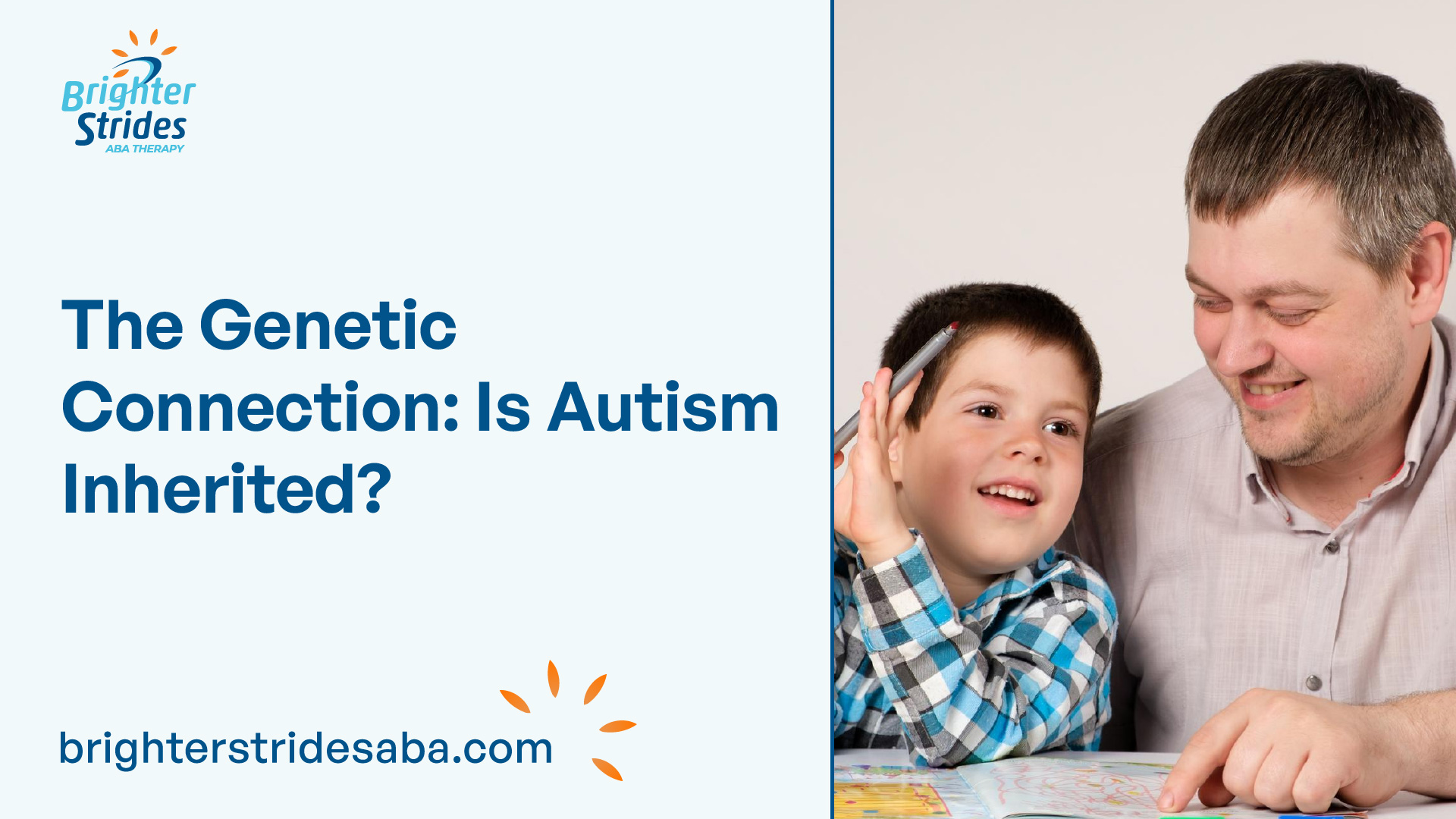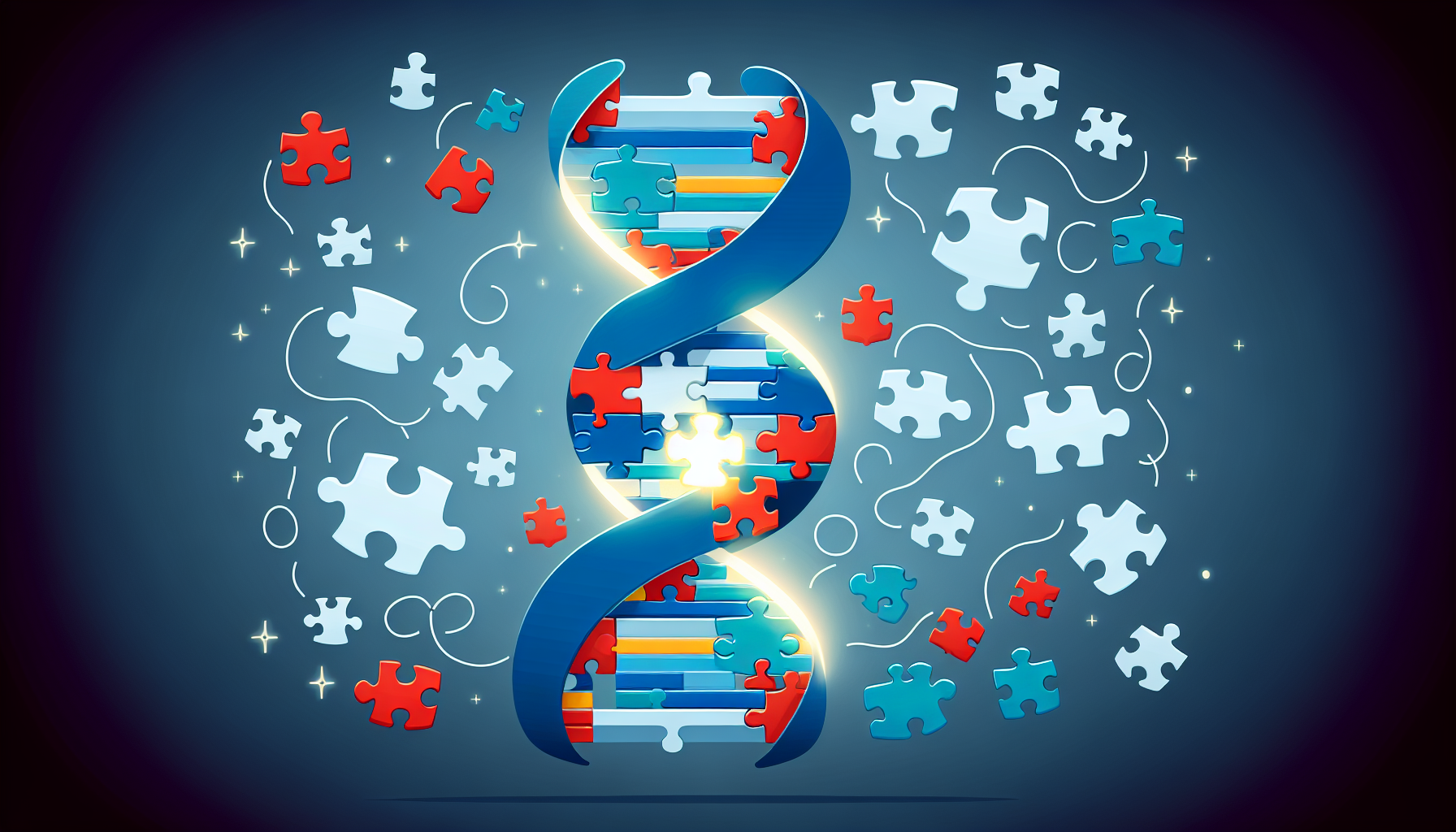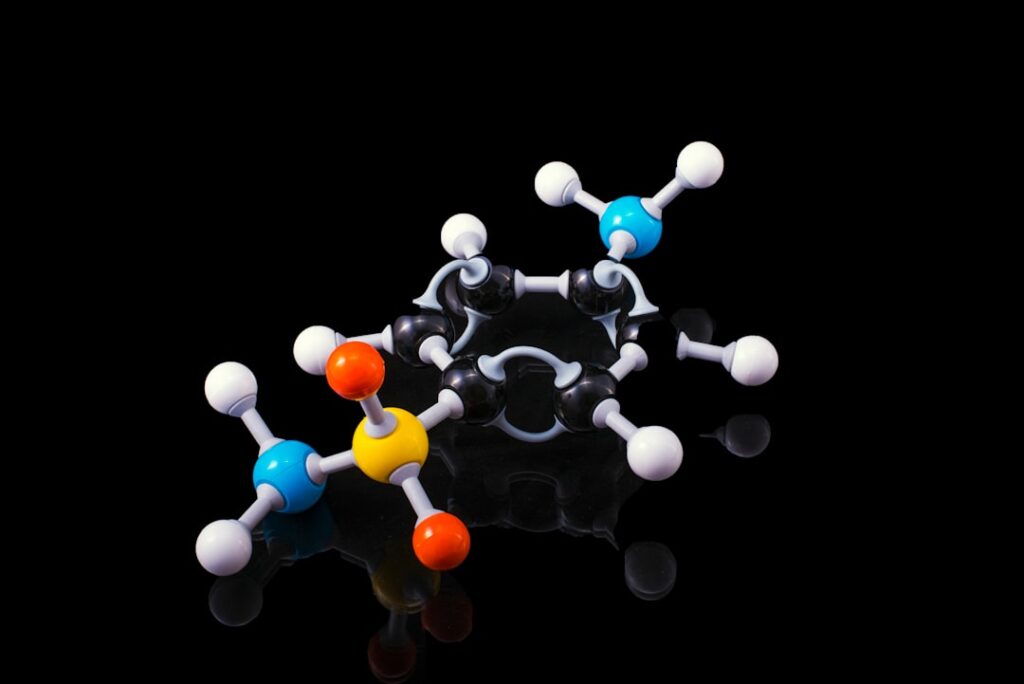Understanding Autism Genetics
Autism Spectrum Disorder (ASD) is a complex neurodevelopmental disorder that has been the subject of extensive research to understand its genetic and environmental influences. In this section, we will explore the genetic influence on autism as well as the role of environmental factors in autism risk.
Genetic Influence on Autism
Multiple studies have shown that genetic factors play a significant role in the development of autism. Genetic factors that increase the risk of autism have been found to be more common in affected individuals than those without autism, according to the Centers for Disease Control and Prevention (CDC).

The heritability of Autism Spectrum Disorders (ASD) has been estimated to be approximately 50%, suggesting that genetic factors explain half of the liability for autism [2]. Changes in over 1,000 genes have been reported to be associated with ASD, with genetic factors estimated to contribute 40 to 80 percent of ASD risk. However, it is important to note that not all individuals with these gene variations will develop autism.
Environmental Factors and Autism Risk
While genetic factors play a significant role in the development of autism, environmental factors also contribute to the overall risk. The influence of environmental factors becomes more pronounced as the prevalence rates of autism decrease. Studies have shown that shared environmental effects become significant as the prevalence rate of autism decreases from 5% to 1%.
It is important to note that environmental factors alone are unlikely to cause autism. Rather, they may interact with genetic factors, contributing to the overall risk. However, the specific environmental factors that may influence the development of autism are still being actively researched.
Understanding the genetic and environmental influences on autism is essential for developing a comprehensive understanding of the disorder. Genetic factors account for a significant portion of the risk, with various gene variations contributing to the overall liability. Environmental factors, although less prominent, also play a role, especially in lower prevalence rates. Ongoing research aims to uncover the complex interplay between genetics and the environment to further enhance our understanding of autism.
Heritability of Autism
When examining the link between genetics and autism, it becomes evident that there is a strong genetic component to the development of Autism Spectrum Disorder (ASD). Understanding the heritability of autism can provide valuable insights into its origins and potential risk factors. In this section, we will explore heritability estimates and the findings from sibling and twin studies.
Heritability Estimates
Numerous studies have been conducted to determine the heritability of ASD. Meta-analytic findings suggest that heritability estimates for autism range from 64% to 91%. These estimates indicate that genetic factors explain a significant portion of the liability for autism. This suggests that approximately 50% of the risk for ASD can be attributed to genetic factors.
It is important to note that shared environmental effects become more significant as the prevalence rate of ASD decreases. This indicates that environmental factors may play a role in the development of autism, particularly in cases where genetic factors are less prevalent.
Sibling and Twin Studies
Sibling and twin studies provide valuable insights into the heritability of autism. According to a CDC report, family members of individuals with autism are more likely to have autism themselves, suggesting a genetic link. The relative recurrence risk (RR) of ASD is significantly higher in full siblings compared to the general population. Among children born in Sweden, the RR of ASD was 10.3 for full siblings, 3.3 for maternal half-siblings, 2.9 for paternal half-siblings, and 2.0 for cousins.
Twin studies have also been instrumental in understanding the heritability of autism. Monozygotic (identical) twins, who share 100% of their genetic material, have a higher concordance rate for ASD compared to dizygotic (fraternal) twins, who share approximately 50% of their genetic material. The relative recurrence risk of ASD is estimated to be 153.0 for monozygotic twins and 8.2 for dizygotic twins.
These studies indicate that genetic factors significantly contribute to the risk of developing autism. Twin studies demonstrate a higher concordance rate for autism among monozygotic twins, further supporting the strong genetic influence. However, it is important to note that environmental factors may also play a role in the manifestation of autism symptoms, as evidenced by the lower concordance rates among dizygotic twins.
By examining heritability estimates and the findings of sibling and twin studies, researchers continue to gain a deeper understanding of the genetic underpinnings of autism. While genetic factors contribute significantly to the risk of developing autism, the interplay between genetic and environmental factors is an ongoing area of research.
Genetic Factors in Autism
Understanding the role of genetics in autism spectrum disorder (ASD) is crucial for gaining insights into its development and potential risk factors. In this section, we will explore gene variations and rare gene mutations as key genetic factors contributing to ASD.
Gene Variations and ASD Risk
Genetic factors play a significant role in the development of ASD. Changes in over 1,000 genes have been associated with ASD, and these genetic factors are estimated to contribute to 40 to 80 percent of the risk of developing ASD. Many of these gene variations are common and can influence the risk of developing ASD, but it’s important to note that not all individuals with these gene variations will be affected.
The genes associated with ASD are involved in various aspects of brain development, including the production, growth, and organization of neurons. Abnormalities in the frontal and temporal lobes of the cortex, which are involved in emotions, social behavior, and language, underlie the differences observed in socialization, communication, and cognitive functioning in individuals with ASD.
Impact of Rare Gene Mutations
In addition to gene variations, rare gene mutations or chromosome abnormalities also contribute to ASD. These mutations often occur in a single gene and can be associated with syndromes that involve additional signs and symptoms affecting various parts of the body. Approximately 2 to 4 percent of individuals with ASD are thought to have ASD as a result of these rare gene mutations [3].
It is worth noting that the presence of rare gene mutations does not guarantee the development of ASD. The interaction between genetic factors and environmental influences is complex, and additional research is ongoing to better understand how these factors contribute to the development of ASD.
Understanding the genetic factors involved in ASD provides valuable insights into its origins and potential risk factors. While genetic factors contribute significantly to ASD, it’s important to remember that ASD is a complex condition influenced by a combination of genetic and environmental factors. Ongoing research aims to deepen our understanding of these factors and their interplay in the development of ASD.
Brain Development and Autism
The development of the brain plays a crucial role in understanding autism and its genetic underpinnings. Many genes associated with autism spectrum disorders (ASDs) are involved in the intricate process of brain development. These genes impact various aspects of brain development, including the production, growth, and organization of neurons.
Genes Related to Brain Development
Numerous genes related to brain development have been implicated in autism. These genes are involved in critical processes such as neuronal migration, synapse formation, and the regulation of neuronal signaling. Alterations in these genes can disrupt the normal development and functioning of the brain, leading to the characteristic features observed in individuals with autism.
Abnormalities in Brain Regions
Abnormalities in specific brain regions have been linked to autism. The frontal and temporal lobes of the cortex, which are involved in emotions, social behavior, and language processing, are particularly affected in individuals with autism. These abnormalities contribute to the socialization, communication, and cognitive functioning differences observed in ASD.
Research using neuroimaging techniques has provided insights into the structural and functional differences in the brains of individuals with autism. These studies have revealed variations in brain connectivity, cortical thickness, and the size of specific brain structures. Although these findings offer valuable information, it’s important to note that brain differences in autism are complex and can vary between individuals.
Understanding the genetic factors involved in brain development and the resulting abnormalities in specific brain regions provides valuable insights into the biological basis of autism. However, it’s important to note that autism is a multifactorial condition influenced by a combination of genetic vulnerability and environmental factors [6]. Further research is needed to unravel the intricate interplay between genetics and brain development in autism.
As we explore the genetic connection to autism, it’s essential to consider other factors such as family history, environmental influences, and demographic factors that contribute to the risk and development of autism spectrum disorders. By studying the complex interactions between genes, brain development, and environmental factors, we can gain a deeper understanding of autism and work towards improved diagnosis, treatment, and support for individuals with autism and their families.
Family History and Autism Risk
When exploring the connection between genetics and autism, family history plays a significant role in understanding the risk factors associated with the condition. Research has shown that individuals with a family history of autism are more likely to have autism themselves, indicating a genetic link. Let’s delve deeper into the impact of family history on autism risk, specifically focusing on autism in families and the influence of siblings and relatives.
Autism in Families
Multiple studies have demonstrated that having a family member with autism increases the likelihood of autism within the family. According to a CDC report, family members of individuals with autism are more likely to have autism compared to the general population. The risk of autism is significantly increased when a full sibling has been diagnosed, with the risk being approximately 10 times higher compared to individuals without a sibling with autism. The risk is also elevated, though to a lesser extent, when a cousin has been diagnosed with autism [2].
Among children born in Sweden, the relative recurrence risk (RR) of autism spectrum disorder (ASD) was found to be highest for full siblings, followed by maternal half siblings, paternal half siblings, and cousins, indicating a clear familial pattern of inheritance [2].
Influence of Siblings and Relatives
The risk of autism is further influenced by the presence of siblings and other relatives. The relative recurrence risk (RR) of ASD has been estimated to be higher for monozygotic twins (identical twins) compared to dizygotic twins (fraternal twins), indicating a stronger genetic influence in identical twins. Full siblings also have an increased risk of autism, with the RR estimated to be 116.8 [2].
When it comes to the order of birth within a family, research suggests that the risk of autism increases with each subsequent child if an older sibling has already been diagnosed. In fact, the chances of a child developing autism are about 20% greater if they have a sibling with autism compared to a child with neurotypical older siblings. If the first two children in a family have autism, the chances of subsequent children developing autism increase to 32%.
Additionally, siblings of children with autism have been found to be more likely to experience other psychiatric or neurodevelopmental disorders, such as anxiety, schizophrenia, bipolar disorder, and tic disorders like Tourette’s syndrome. This suggests a shared genetic susceptibility to a range of mental and neurological conditions within families with a history of autism.
Understanding the role of family history and the increased risk of autism among siblings and relatives is critical for early detection, intervention, and support. Recognizing these genetic factors can aid in providing appropriate resources and services to individuals and families affected by autism spectrum disorder.
Demographic Factors in Autism
Several demographic factors have been found to be associated with autism spectrum disorder (ASD). These factors include age, socioeconomic status, and ethnicity, and they can provide insights into the prevalence and characteristics of ASD.
Age, Socioeconomic Status, and Autism
Statistically speaking, certain demographic factors have been linked to the prevalence of ASD. One such factor is the age of the parents. Research suggests that ASD is more common in children born to older parents. However, it is important to note that the overall risk is still relatively low, even for older parents.
Socioeconomic status is another factor that has been associated with ASD. Children from families of higher socioeconomic status have been found to have a higher likelihood of being diagnosed with ASD. This may be influenced by factors such as greater access to healthcare resources, including early intervention services and diagnostic evaluations.
Ethnicity and Autism Prevalence
The prevalence of ASD can vary among different ethnic groups. According to data collected by the Autism and Developmental Disabilities Monitoring Network in the United States, the prevalence of ASD among children aged 8 years differs across different ethnicities [8].
As of the latest data collected in 2020, one monitoring site in Arizona reported a prevalence of 26.8 per 1,000 for ASD among children aged 8 years, meeting the threshold for statistical precision for the American Indian/Alaska Native (AI/AN) population. This suggests a higher prevalence of ASD within this specific ethnic group.
It is important to note that while these demographic factors have been associated with ASD, they do not determine an individual’s risk of having ASD. The exact causes and mechanisms behind these associations are still being researched, and further studies are needed to fully understand the relationship between demographic factors and the development of ASD.
Understanding the demographic factors associated with ASD can contribute to a better understanding of the disorder and the development of targeted interventions and support for individuals and families affected by ASD.
References
- https://www.cdc.gov/ncbddd/autism/data.html
- https://www.ncbi.nlm.nih.gov/pmc/articles/PMC4381277/
- https://medlineplus.gov/genetics/condition/autism-spectrum-disorder/
- https://pubmed.ncbi.nlm.nih.gov/26709141/
- https://www.ncbi.nlm.nih.gov/pmc/articles/PMC4104233/
- https://www.ncbi.nlm.nih.gov/pmc/articles/PMC4129499/
- https://health.clevelandclinic.org/are-siblings-at-greater-risk-of-autism
- https://www.nimh.nih.gov/health/statistics/autism-spectrum-disorder-asd

 We've just released an article!
Check out our blog!
We've just released an article!
Check out our blog!



